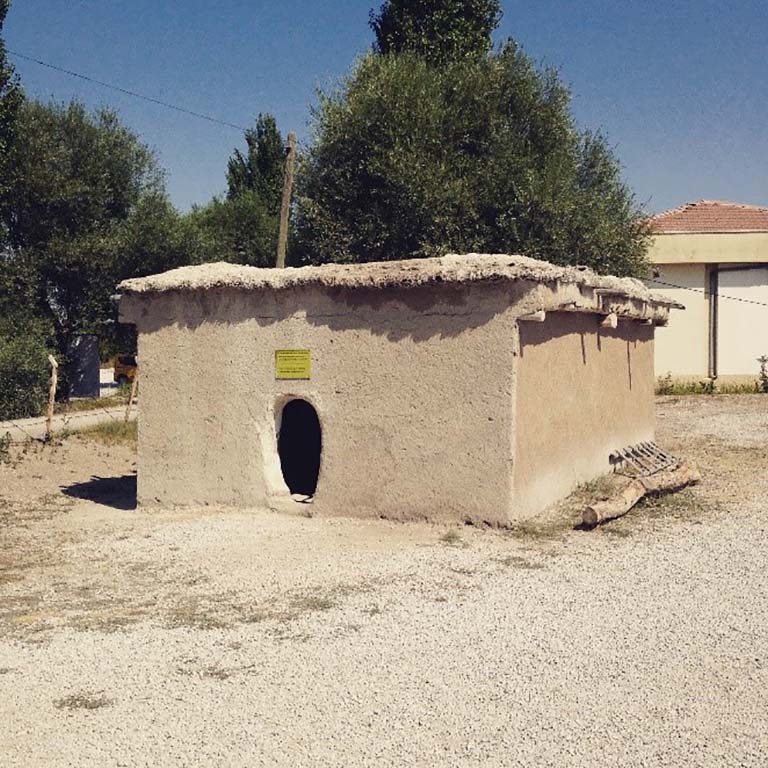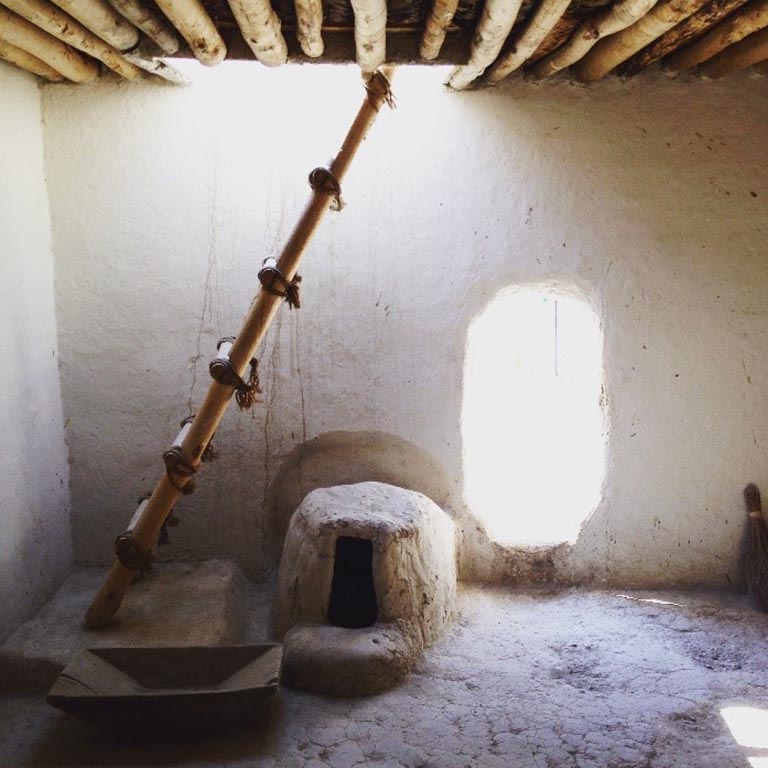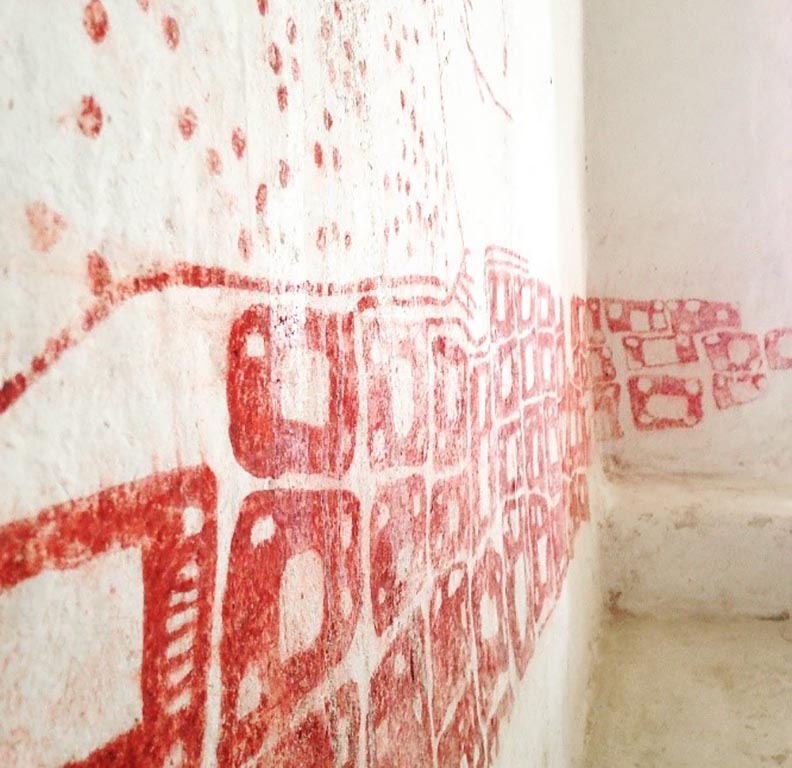Article by Katrina Gargett

One of the most surprising features of the visitor experience at Ҫatalhöyük is the Experimental House, situated to the south of the Visitor’s Centre. By providing a visual representation of what one of the Neolithic houses may have looked like during Ҫatalhöyük’s occupation, the Experimental House makes for easier understanding when taking a tour around the North and South Shelters. Instead of squinting into a trench, and trying hard to imagine what the full interiors of the houses would have looked like, the cool dimness of the Experimental House puts you into the Neolithic frame of mind before you even set off on the tour. You remember seeing the reflection of light off the white plastered walls and standing on the platforms surrounded by geometric wall art. This then allows you to orient yourself and lend your efforts to marvelling at the work of the archaeologists in the trenches. In this way, the Experimental House is arguably one of the most useful assets to the overall visitor experience at Ҫatalhöyük.

There is no doubt that experimental archaeology doesn’t only aid visualisation, but also interpretation. This was the main reason for building the House at Ҫatalhöyük. Back in 1997, a group of archaeologists and builders from the local village of Küçükköy and Ҫumra set out to build the house, based on evidence gathered from site. It was a grand vision, and the next two years were spent gathering material, experimenting with brick formation and laying foundations. As many of the people in the village still live in mud-brick houses today their familiarity with the techniques and challenges of using this material proved invaluable. An oven was built below the entrance in the roof. Store rooms were constructed on the north side of the house. Two platforms were constructed and the walls plastered and painted white. The house was finally completed in 1999. If you’re interested in finding out more about the success of the experiments conducted during the building of the house then please feel free to take a look at Mirjana Stevanovic’s report in the Ҫatalhöyük 1999 Archive Report.

Since its completion the house has since come under the care of the Visualisation Team. In 2013 a new sign was installed on the west wall detailing the experiments which were carried out in the house. Indeed, one of the aims for the 2015 season was to improve the signage in the house further and advance the visitor experience by encouraging them to physically interact with different elements of the house. Our primary aim was to make you feel as if it was your own home, and hopefully help your imagination to flourish further.
Ultimately, there is no doubt that the Experimental House has been a valuable part of developing our interpretations of Ҫatalhöyük. It is hoped that the construction of four new houses in the next year will further develop our understanding of the people who were here. They will definitely be worth a visit once they are completed! Who doesn’t want a chance to step back in time and experience the lives of one of the world’s most intriguing Neolithic communities? We look forward to welcoming you!





